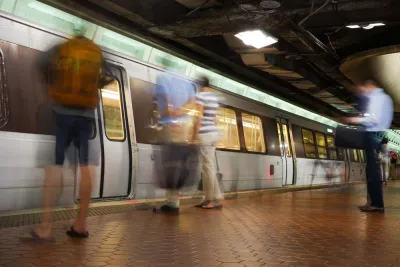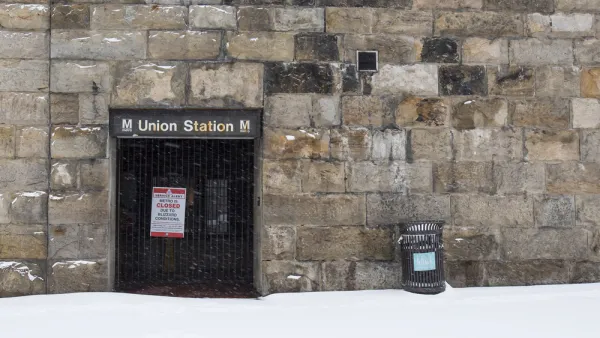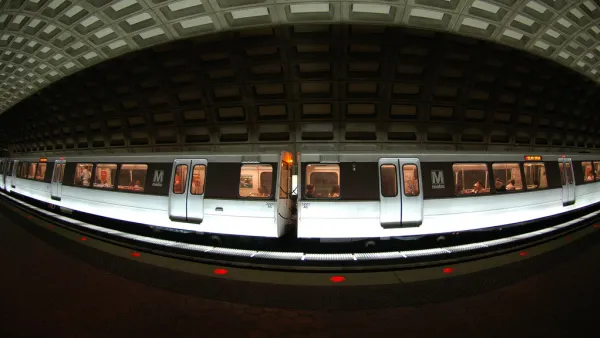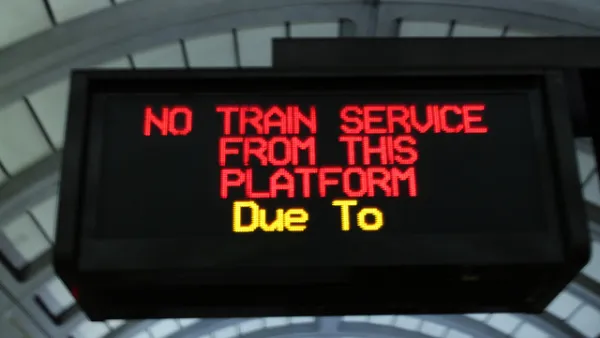Planning and urbanism writers in Washington, D.C. agree that a proposal to cut service to 20 stations in the Metrorail system would have harmful effects for minorities in the region.

"One cost-saving scenario Metro staff presented last week in discussions about how the agency might balance its budget includes closing 20 low-ridership stations during off-peak hours; Maryland and Virginia have seven stations each and six are in the District.
"Many of the stations are clustered on the eastern ends of the Silver, Blue, Orange and Green lines, in Prince George’s County and east of the Anacostia River in the District," adds Powers, before noting that all of these neighborhoods are home to communities of color.
Among the observers upset by the proposal was Metro board member Malcolm Augustine, who represents Prince George's. Powers describes Augustine as "livid" at the implications of the proposal.
Kriston Capps also noticed the troubling implications of the proposal in a post for CityLab, and added ridership figures to the evidence in the case against the proposal:
These stations may be Metro outliers for their lower ridership numbers. But throughout the system, mid-day ridership often rivals the morning or evening rush hours. (At no station does off-peak ridership beat both.) For stations east of the river, though, mid-day ridership accounts for a larger share of overall trips. Riders who use these stations, though relatively fewer in number, would be disproportionately inconvenienced by these specific service cuts.
Jonathan Neeley also analyzed the proposed service cuts, describing the proposal as draconian, harmful, and potentially harmful to Metro's already damaged reputation. In that post, Neeley also surveys the rest of Greater Greater Washington's writers for their opinion on the proposal, finding a chorus of consternation.
At least one potentially powerful federal regulation stands in the way of the proposed service cuts. The Powers article under discussion at the top of this post concludes with a reminder that Title VI of the Civil Rights Act requires "transit agencies enacting such significant changes in service [to] prepare an 'equity analysis.'"
FULL STORY: The 20 stations Metro could close during off-peak hours to save money are mostly in communities of color

National Parks Layoffs Will Cause Communities to Lose Billions
Thousands of essential park workers were laid off this week, just before the busy spring break season.

Retro-silient?: America’s First “Eco-burb,” The Woodlands Turns 50
A master-planned community north of Houston offers lessons on green infrastructure and resilient design, but falls short of its founder’s lofty affordability and walkability goals.

Delivering for America Plan Will Downgrade Mail Service in at Least 49.5 Percent of Zip Codes
Republican and Democrat lawmakers criticize the plan for its disproportionate negative impact on rural communities.

Test News Post 1
This is a summary

Test News Headline 46
Test for the image on the front page.

Balancing Bombs and Butterflies: How the National Guard Protects a Rare Species
The National Guard at Fort Indiantown Gap uses GIS technology and land management strategies to balance military training with conservation efforts, ensuring the survival of the rare eastern regal fritillary butterfly.
Urban Design for Planners 1: Software Tools
This six-course series explores essential urban design concepts using open source software and equips planners with the tools they need to participate fully in the urban design process.
Planning for Universal Design
Learn the tools for implementing Universal Design in planning regulations.
EMC Planning Group, Inc.
Planetizen
Planetizen
Mpact (formerly Rail~Volution)
Great Falls Development Authority, Inc.
HUDs Office of Policy Development and Research
NYU Wagner Graduate School of Public Service





























